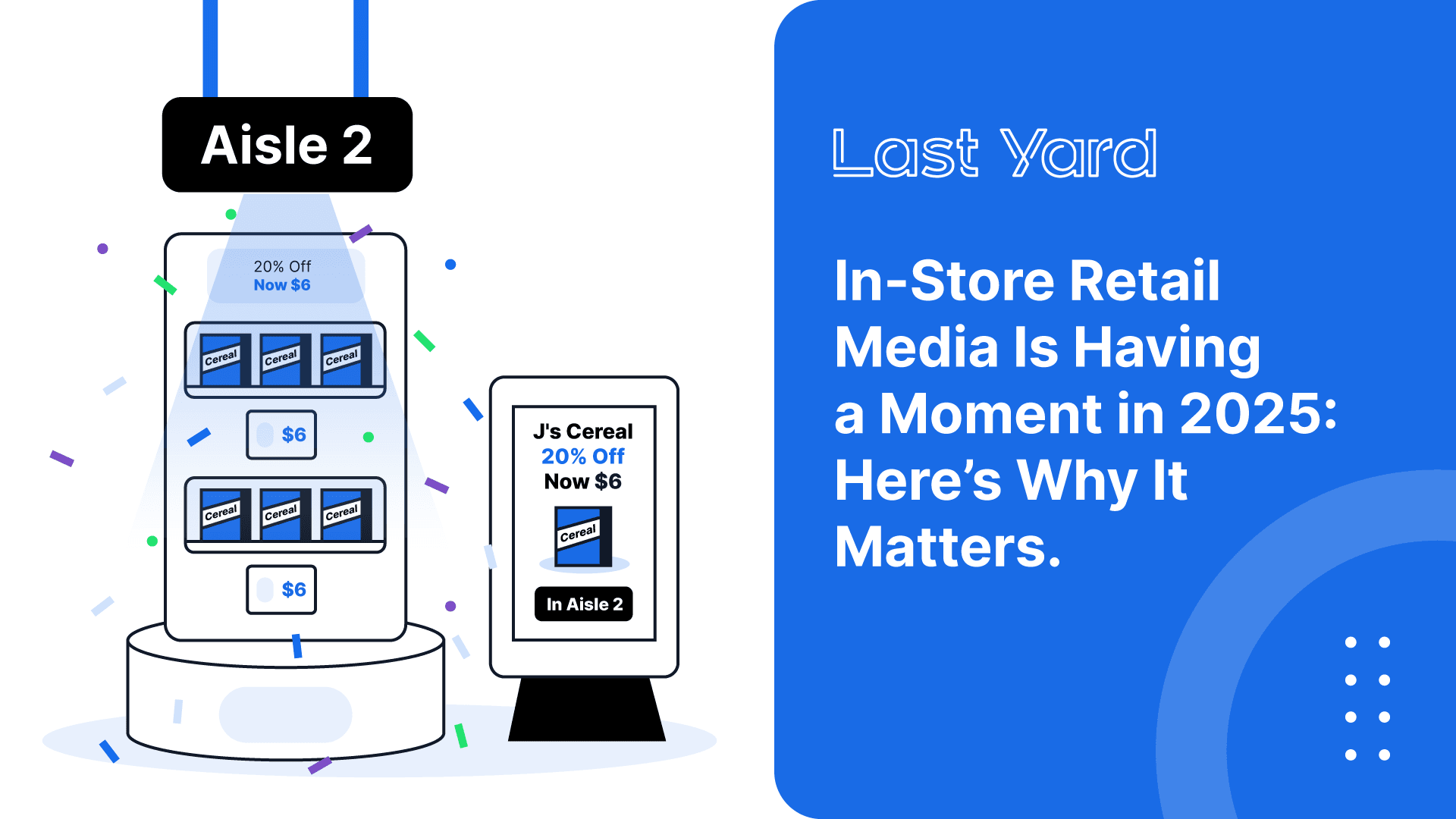Retail media has rapidly grown into one of the most profitable and strategic digital channels for retailers and brands alike. While much of the focus has been on digital placements, sponsored search, display ads, and social integrations, 2025 is shaping up to be the year the physical store, including retail media networks, steps into the spotlight.
According to Criteo’s Coresight Research, global retail media spend will reach $179.5 billion this year, with in-store media, such as digital in-store media and digital ads, playing a key role in that growth. It’s no longer just about what happens on a screen; it’s about what happens at the shelf. For retailers, this presents both a massive opportunity and a new layer of complexity by integrating digital world capabilities into physical retail environments.
Why In-Store Media, and Why Now?
The vast majority of consumer spending still happens in physical stores. Shoppers may browse online, but their buying decisions, including brand adoption and customers’ brand preferences, are often made in the aisle, influenced by what they see, what’s available, and what’s promoted at the point of purchase.
Retailers are increasingly recognising that the same media principles applied online, such as targeting, personalisation, and contextual placement, can and should be applied inside the store.When done well, in-store media delivers value in several ways:
- It allows retailers to monetise underutilised assets like digital signage, in-store screens, and shelf-edge displays.
- It gives brands access to high-intent audiences, close to the moment of decision, which enhances shopper marketing strategies.
- The shopper experience is enhanced when campaigns are relevant, timely, and location-aware, thereby boosting shopper engagement.
This isn’t about turning stores into ad channels for the sake of it. It’s about making the shopping experience more useful, informative, and consistent, especially as customer expectations and customer journey complexity continue to rise.
The Hidden Complexity of Execution
Despite its potential, in-store media hasn’t scaled as quickly as its digital counterpart. One major reason: execution is hard. Most retailers still rely on fragmented systems and siloed teams, which makes it difficult to deliver campaigns consistently across all locations.
Promotions can be delayed, misaligned with inventory, or displayed inaccurately, leading to wasted media spend and, worse, reduced customer attention. Even retailers with digital signage in place often struggle with the backend infrastructure required to manage in-store campaigns dynamically. Unlike online media, which can be adjusted in real-time, in-store media still involves:
- Manual updates and print media cycles that slow down execution
- Disconnected data between marketing, pricing, POS systems, and store systems
- Complex approval processes that delay rollout
The result is a lag between strategy and delivery, leading to missed opportunities for high-quality branding experiences and new revenue streams from non-endemic advertisers.
Shifting Focus from Screens to Systems
The conversation around in-store media tends to focus on screens and visual impact, such as eye-catching displays and promotional displays. But the real differentiator isn’t the hardware; it’s the infrastructure behind it. Retailers that can align pricing, promotions, inventory, and media in a single system will be the ones who scale in-store media successfully. That requires rethinking execution.
Dynamic content must be driven by store-level insights, not just global campaigns. Updates need to reflect changes in stock, location-specific pricing, and active promotions. Teams across marketing, merchandising, and store operations must collaborate on a shared data foundation so that execution aligns with display compliance and is fast, consistent, and accurate.
What the Leaders Are Doing Differently
Leading retailers like Best Buy, for example, aren’t waiting for perfect conditions. Instead, they’re treating in-store media as a “test and learn” space: starting small, piloting campaigns, and using first-party data to iterate. They’re focusing on high-impact placements like endcap screens, cooler doors, and entry displays that influence shopper behaviour.
By investing in automation and connectivity across all retail endpoints, they ensure what’s displayed in-store matches what’s being promised across digital channels. Crucially, they understand that in-store retail media is no longer just a revenue stream. It’s part of the customer experience in a high-purchase-intent environment. When pricing is off or promotions are outdated, shoppers notice. When everything aligns—price, product, message, and moment–it builds trust, drives purchase decisions, and leads to successful retail purchases.
The Shelf Is Speaking. What Is It Saying?
In-store retail media is not a new concept, but its relevance has changed as an emerging media opportunity. In a landscape where personalisation, speed, and accuracy define competitive advantage, the physical store can no longer be left behind.
Retailers who treat the shelf as a strategic touchpoint, not just a mortar place to stock products, stand to gain the most. But doing so requires more than installing screens. It demands integration, automation, and an obsessive focus on execution.
The store is no longer just a place to shop. It’s a media channel, a brand stage, and a conversion engine—all rolled into one. And in 2025, the most effective campaigns won’t just be seen online. They’ll be seen on shelves, at the moment that matters most.


